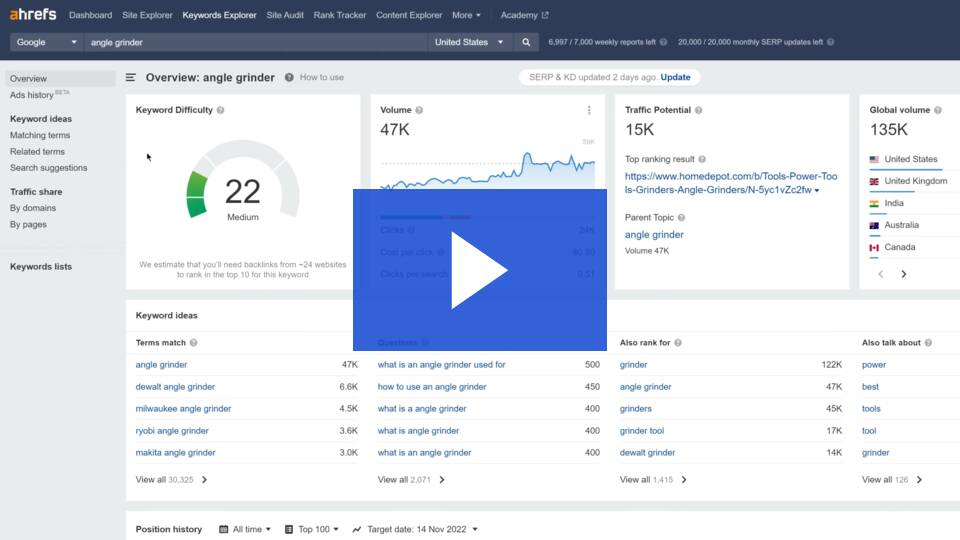
An alarming study by Ahrefs revealed that 9 out of 10 articles published online go undiscovered by users on Google. To increase your chances of ranking on search engines, you need to focus on high-quality content, and well-structured content briefs serve as an excellent starting point.
With their super specific and detailed instructions, content briefs help bridge the gap between the writer and the reader and make sure that your content hits all the right notes and resonates with your target audience.
In this article, we’re going to show you how to create a great content brief, with a free template and a practical example to help you take the first step towards creating impactful content.
What is a content brief?
A content brief is a document that provides an outline for a piece of content.
It can vary in length and level of detail depending on the type of content being created and its intended audience. Briefs are primarily written to guide content writers or copywriters in the right direction and make sure that their work aligns with the brand’s overall marketing strategy.
While there is no fixed formula for crafting the perfect content brief, we’ve put together a list of elements that are good to include. We’ll discuss each of these components in detail, along with some bad practices that you should steer clear of when preparing content briefs. But first, let’s talk about why these skeleton documents are a fundamental part of the content production process.
The importance of content briefs
We’ve identified six main reasons why content briefs should be an integral part of your content creation process.
1. Guiding the writers
Writing is an incredibly creative process. One topic assigned to ten different writers without any supplemental guidelines can give you ten unique content pieces. That’s why too much creative freedom can be detrimental to your brand identity, especially if you have a team of writers. They can each have their own approach, but you must give them some idea of what you want from the content they write.
The other thing to remember is that sometimes, even the most experienced writers can mix up or misunderstand topics, concepts, or basic ideas or simply need to be briefed about the brand they will be writing for. A content brief addresses all these issues by providing clarity.
Make sure there are no information gaps in your instructions. Include all essential facts, figures, stats, quotes, and sources so that the writers have everything they need to create excellent content.
2. Communicating your needs with your partner
Content briefs are not just a way for writing teams to collaborate better. They are also a means for establishing a two-way street between a client and the agency they partner with. A brief serves as an excellent form of communication and a single source of truth, ensuring that every stakeholder is on the same page from the get-go.
Clear directions now will lead to quicker approval later, avoiding last-minute issues and saving precious time between the writing and publishing phases.
3. Shaping the content according to the target audience
Every business that relies on content marketing needs to target its content towards a specific audience. You can use a content brief to achieve this by including details such as language, tone, style, or any other instructions and goals you want writers to keep in mind. This will ensure that they understand exactly where the content should fit in the customer journey, resulting in the creation of highly relevant material that matches the reader’s expectations and answers their questions.
Playing a central role in the production of precisely targeted content, briefs will also help you get referral traffic. Other websites and publishers that deem your content a relevant source of information on a specific topic will organically link to it, driving up your website authority, engagement, visitor count, and, ultimately, conversion.
4. Defining and refining your content strategy
Most businesses invest a lot of time and effort into finding a voice that resonates with their target audience. Therefore, tone automatically becomes part of a brand’s personality and can’t be changed on a whim. Similarly, there must be a certain consistency in other aspects of your work, too, such as facts, messaging, voice, and style, that helps your target audience identify your brand from your material. A well-written content brief helps with all this and more.
The more extensive a content brief is, the more details you can pack into it. When a brief goes through different business stakeholders, they can all collectively make sure that everything is on track and in line with overall business goals. Content briefs outline in detail what is expected from the content and how these goals will be achieved, making way for a well-integrated marketing strategy.
5. Saving time
Having one comprehensive content document containing the complete details and preapproved by all primary decision-makers can help save time in multiple ways.
Firstly, it will streamline your writing and communication process. Content briefs are especially great for communicating with multiple writers in a team. Secondly, once you’ve established a standard, reusable format or template for your content briefs, it can help avoid repetitive back-and-forths and make your content creation process much more efficient in the future. Additionally, the early approval helps prevent rewrites, revisions, and other avoidable edits, improving your chances of meeting all your deadlines.
6. Improving search rankings
Content briefs play a pivotal role in making your write-ups well-defined, refined, consistent, and relevant for the reader while also adding SEO value to them. This helps fulfil one of the most important goals of any marketing strategy, i.e., to make content visible, which means ranking higher on search engine results pages.
All the essential elements of a content brief, such as the focus keywords, relevant meta tags, search intent, and internal and external links, come together to produce a perfectly written and well-optimised piece of content (more on these in the next section!).
Key elements of a content brief
Here is a list of over 14 fundamental components that a comprehensive content brief should include for maximum effectiveness and efficiency.
1. Meta title and meta description
These two are key descriptors for every piece of content you publish. They are important for readers as well as search engines, giving them both a to-the-point summary of a write-up.
Peep our SERP snippet below, for instance.
On-point title? ✅
Relevant description? ✅
When a page shows up in search results with an accurate and relevant meta title and description, it will pique the user’s interest and encourage them to click on it for a more detailed answer.
2. Topic
The topic can be thought of as a thesis statement but for an article. It effectively summarises the crux or core message of the content. A good way to formulate a topic statement is to build upon the meta title because you can’t effectively convey the whole idea behind an article via a short title alone anyway. A very brief description, perhaps two to three sentences long, about the topic is great for communicating to the writer what you want from the write-up.
3. Target audience
Clearly defining your target audience is a crucial prerequisite for formulating your marketing strategy because it is an active contributor to higher conversions. It involves lots of research, which is often carried out when your business is still in its nascent stages.
Writers need to know who the content is for before they can start preparing it. Telling them about their audience’s key demographic identifiers (e.g., age, occupation, location), geographic information (country, city, postcode), or psychographic factors (e.g. lifestyle, values, personality traits), for example, will add some much-needed context to the topics they’re assigned. This will result in content that resonates well with the target audience, adequately fulfilling their expectations.
4. Tone of voice
When writing any type of content, the way you speak to your audience – right down to the words you choose – is critical in determining its relatability and consequent impact.
Often, different topics, niches, and audiences require different approaches to writing content. For example, for an informational article about corporate presentations, you might want the writer to keep the tone more formal and professional. But for a piece aimed at fresh college grads on how to ace their first job interviews, a friendly or conversational tone might be a much better choice.
5. Search intent or purpose
The search intent for a topic refers to the reason why a person is looking up said topic. Do they want some general information on it for an assignment? That’s informational intent. Are they looking for a comparative review of two products? That’s definitely commercial—they likely want to know which one they should buy.
So, what is the exact impact of incorrectly assuming a user’s intent? If someone googles the phrase “what is a chatbot”, that’s probably exactly what they want to know. An article outlining how chatbots work would be useful for them. But if you answer this question with a product page showcasing your chatbot service, it will be totally irrelevant. (Do a quick Google search for “what is a chatbot”, and you’ll see what we mean!)
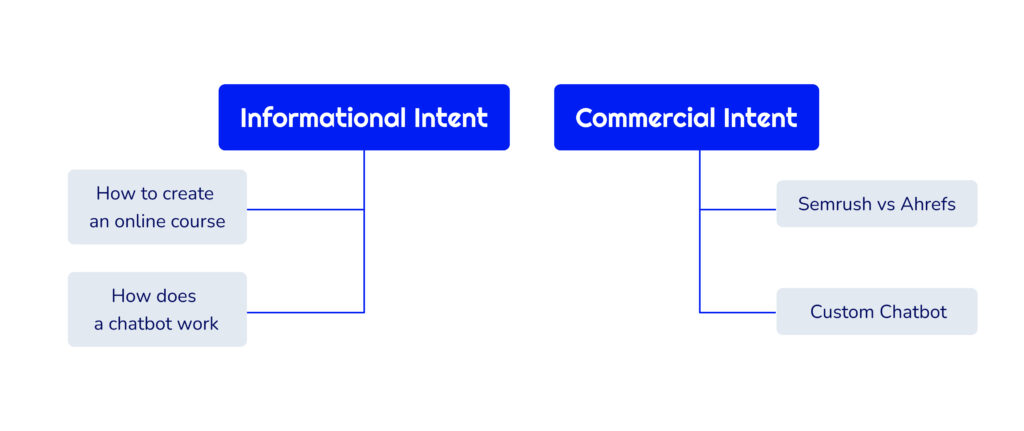
If you get the search intent wrong, your brand can suffer greatly. You will lose traffic, authority, and, most importantly, the trust of your audience. Thus, it’s important to clearly communicate the correct intent to the writer so they know in what direction they should take the topic.
6. Focus words and phrases
There are certain words and phrases that must be used within a piece of content if you want it to rank higher and more often in the SERPs. These terms are called SEO keywords or target keywords, and they play an important role in telling search engines what your content is all about.
There are many ways – such as by using tools like Ahrefs or Semrush – to find out which keywords you should choose for a topic. Here is an example how you can do that with Ahrefs.
Keywords Explorer by Ahrefs: Discover Keyword Ideas and Analyse SEO Metrics
A good practice is to sort these keyword suggestions according to their importance when including them in your brief. Some content managers and writers also like when the recommended frequency for each keyword (the number of times it should be incorporated into the text) is mentioned in the brief too.
7. Internal links and anchor texts
Internal linking – hyperlinking one page of your website to another related page – is one of the most effective yet underrated on-page SEO strategies
Inserting a healthy assortment of internal links into your content adds value to it because these linked resources can then easily be found by both website visitors and search engines in case they want further information.
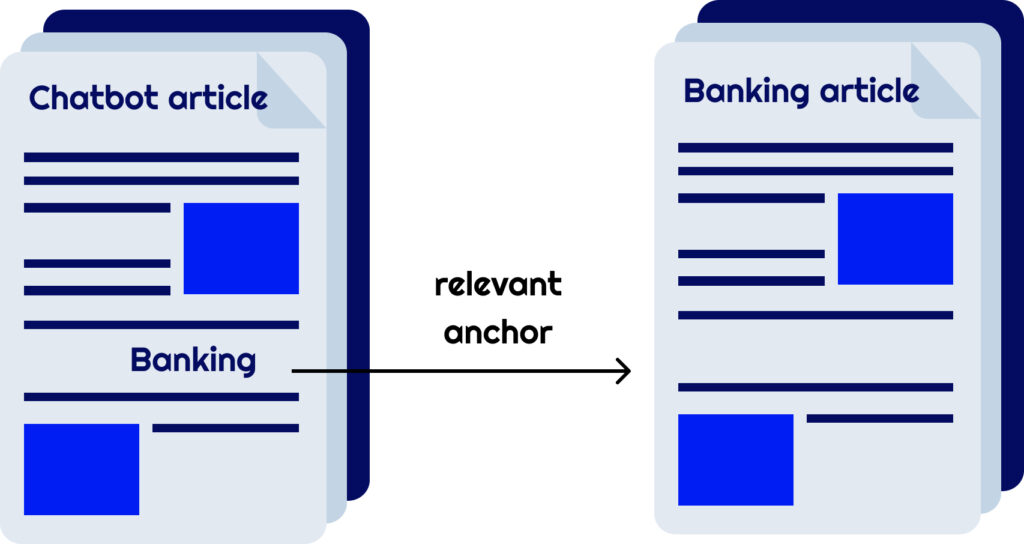
You can’t just tell writers which pages to link to, though. The anchor text for each internal link needs to be carefully selected such that it doesn’t misrepresent the linked content or confuse the search engine or reader. SEO professionals and content marketers generally know a few neat tricks to select the right anchor texts. But a lot of writers are not very SEO-savvy, so it’s good to add specific anchor-URL pairs in the content brief.
8. External links
When a hyperlink within your content points to another website, it’s called an external link.
These can be very useful if you want to supplement your content with valuable information such as key facts, scientific research, or survey results. Citing the original sources for all such information makes sure that people take your content seriously and trust it for authenticity and accuracy.
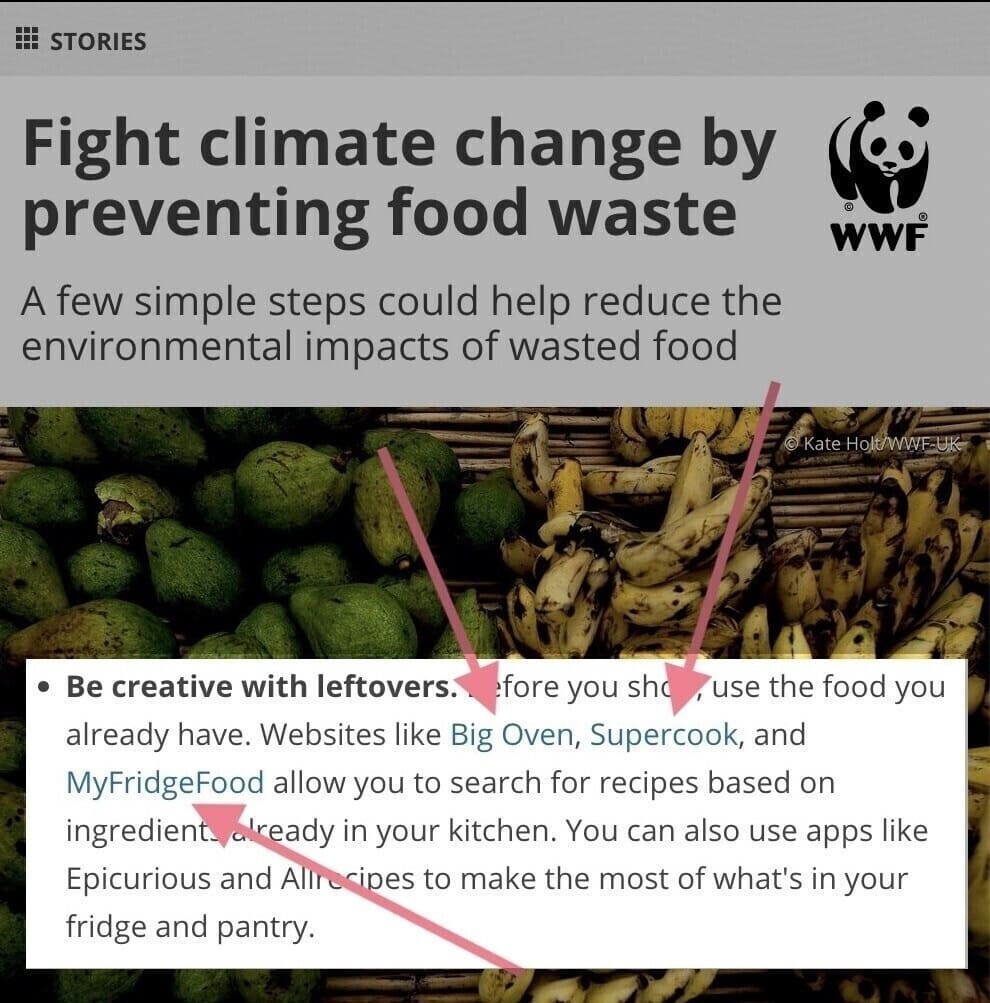
Including all relevant external links in the content brief also helps give writers some useful resources that they can refer to during their research. They should be encouraged to use some of these sources for inspiration.
9. Recommended word count
Without a word limit, you can get pages upon pages of superb material on any topic. So how do you know where to stop?
Tools like Semrush and Surfer SEO offer content writing assistance features that can help. They skim through the top-ranking competing pages for a given topic or keyword and calculate the average word count. You don’t have to follow these recommendations, though. At the end of the day, only you can best judge how long you want your content to be.
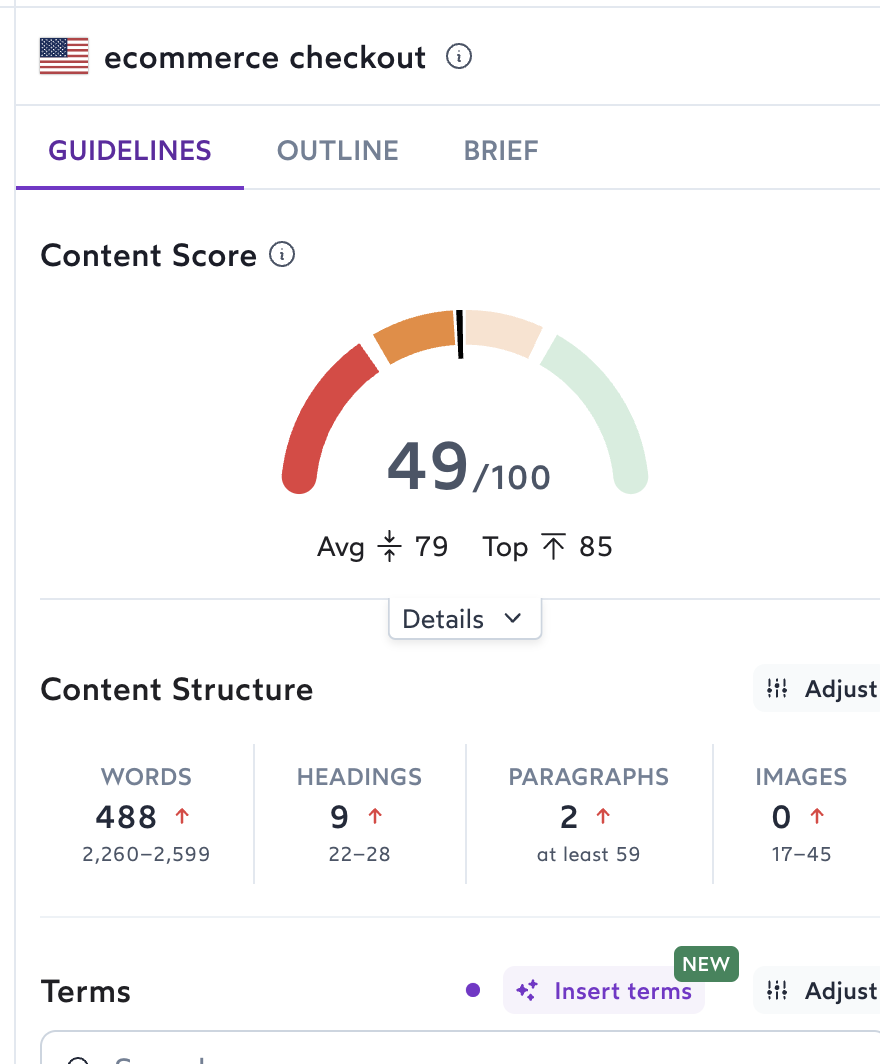
The ideal word count can depend on many other factors, such as the difficulty level of the topic, the sub-topics that you’d like the piece to explore, or the platform where you will be publishing the content. For example, when publishing guest posts on third-party websites, they might have their own word limit guideline that you must stick to in order to avoid getting your submission rejected.
10. CTAs
A CTA or call-to-action is an element that encourages the viewer to take an action that you want them to take. It could be anything, from filling out a feedback form to clicking a ‘Learn More’ button. These seemingly small actions build up to something much bigger—the final goal is to convert the viewer into a paying customer.
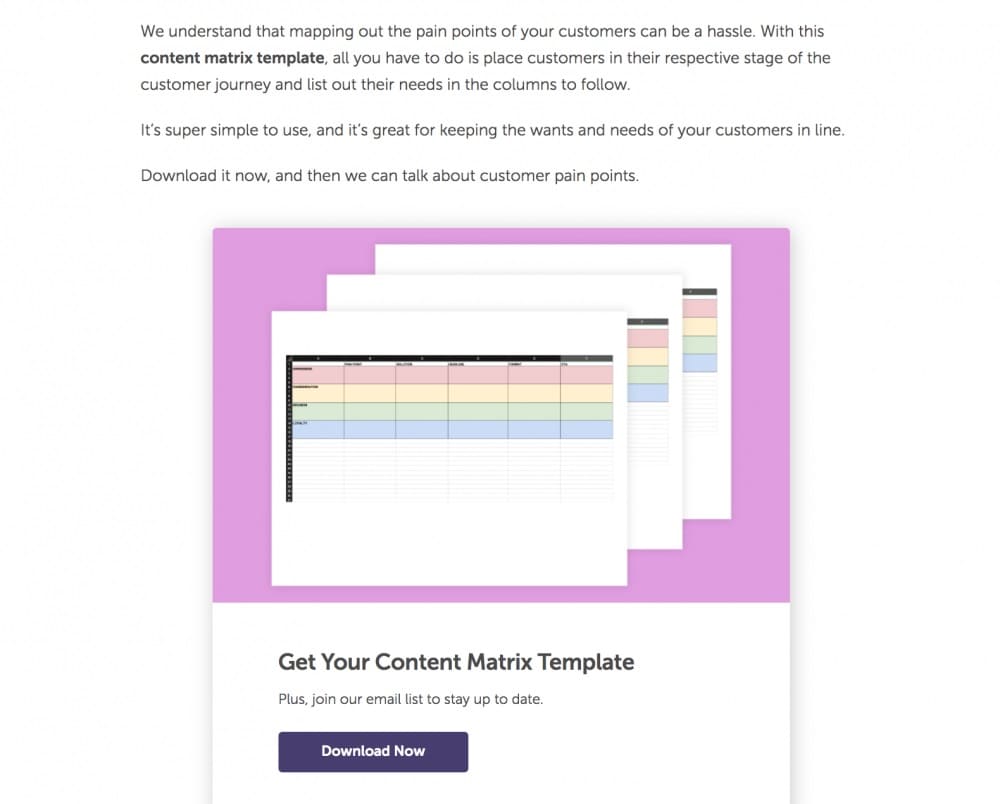
Every content piece is written with the intention of convincing the reader to take some action. Therefore, CTAs are an integral part of every content piece. You need to select the design, format, tone, and copy for each CTA very carefully, depending on its placement, target audience, purpose, and other factors. You can clearly communicate all these instructions to the writer via the content brief.
11. References
Writing any type of content requires extensive research. One great source of valuable information and inspiration is your competitors’ published work. Even sophisticated tools like Surfer SEO offer insights based on data collected from content published on competing websites.
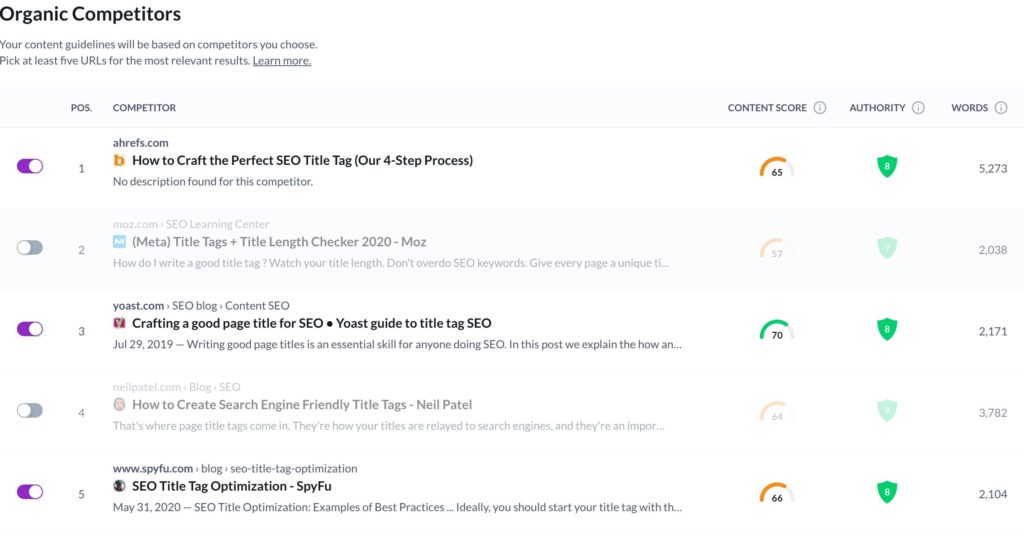
In your content brief, you can include a list of references for the writer to sift through. These will help them gain a better understanding of the topic and enable them to identify gaps, find ways to give a fresh spin to the topic and create value-added content.
12. FAQs
To provide a holistic experience to your readers, use your content to answer popular questions that the average reader might have about the topic. You can easily provide a list of these questions to your writer via a content brief. They can then include these questions where appropriate or list them at the end of their write-up with concise and relevant answers that are easy to understand.
Addressing FAQs lets the readers know that they can depend on you as an efficient and credible source of information. Additionally, it will improve your chances of ranking for the featured snippets and People Also Ask boxes, which can be thought of as premium, greatly sought-after, high-visibility spots in the SERPs.
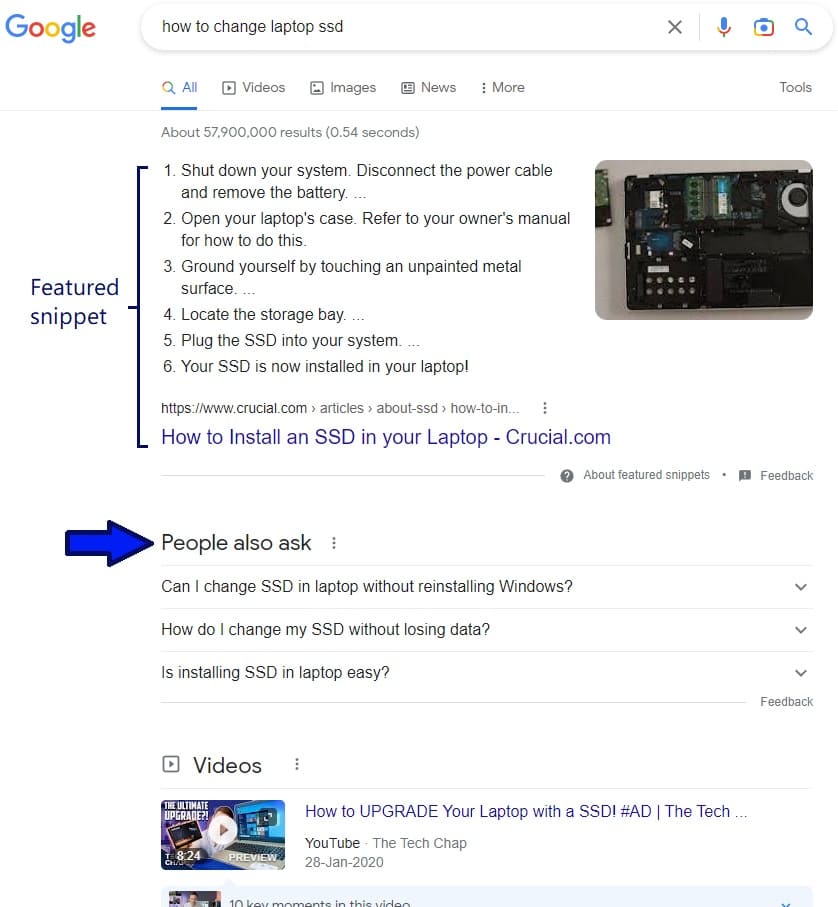
13. Deadlines
It’s important to communicate due dates to your writer as well as other stakeholders, such as editors or marketing leads. For multiple drafts, for example, there can be multiple deadlines, along with a date for the final copy.
Clearly stating all the deadlines in the content brief helps to keep the publishing of new content on schedule. This can be especially critical when you have to submit the content to a third-party publisher or if your marketing strategy involves multiple channels that are all dependent on each other.
14. Content outline
The content outline is one of the most important components of a content brief. It provides a clear structure to the writer, explicitly stating the headings and subheadings. To make it even more detailed, you can add bullet points summarising what information to include in each section of the content.
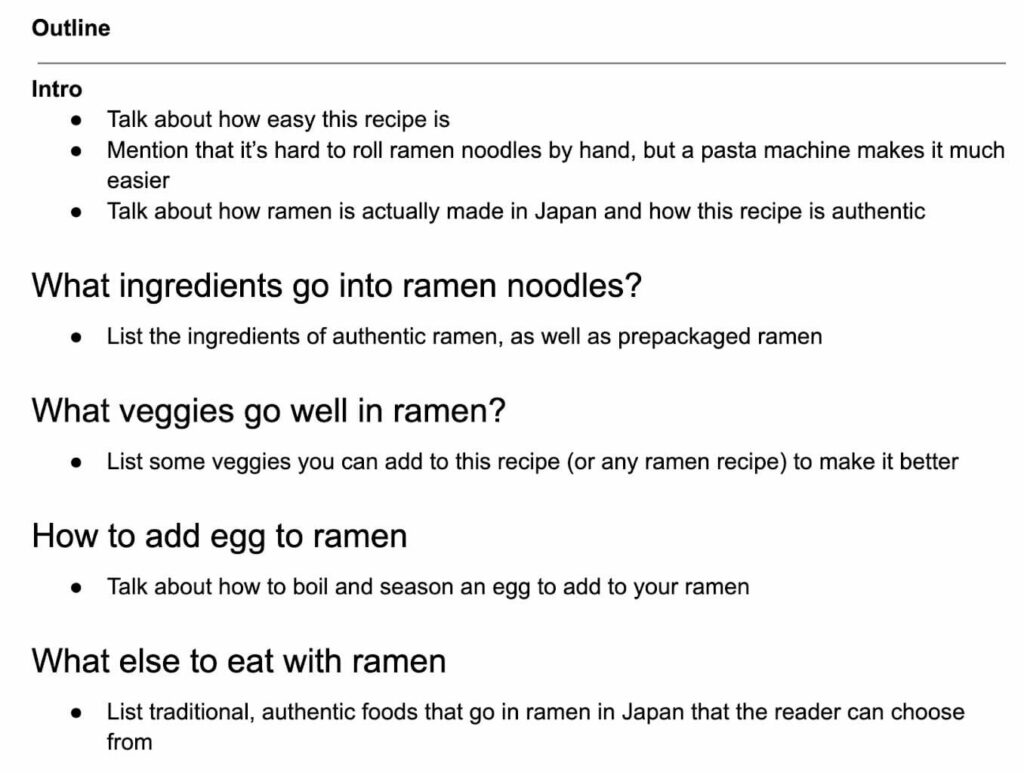
Some people go so far as to mention a strict word count for each subsection, but we prefer to include approximates only, if absolutely necessary.
15. Other specific guidelines
There are many other instructions you can add to your content brief to make it more detailed and helpful for the writer. For instance, we’ve had to include the following items for some of our articles.
- Formatting guidelines or a style guide for consistency, considering language preferences, capitalisation, spelling variants, etc.
- Ideas or instructions for the hero image
- Custom illustrations with alternate texts
- Instructions for sourcing stock images or notes and references for the design team
- Competitors that can’t be mentioned (to avoid conflict)
What not to do
When creating content briefs, you need to remember not just the things you should include but also those that you should avoid at all costs. Let’s talk about a few things that can render a detailed content brief entirely ineffective.
Sometimes, when we’re working on guest contributions, we’ll get a single-sentence open-ended instruction with no context whatsoever. And we’re asked to “just write the article”. On top of that, these websites also clearly state that they reserve the right to reject submissions that “don’t align with their vision”.
If you want the writer to give you what you want, you need to tell them what your expectations are.
Vague or insufficient instructions waste everyone’s time.
On the other end are content managers who like to be a little too specific or too SEO-oriented. One website, for example, casually directed us to a Google sheet containing over 300 keywords of varying priorities, with the exact frequencies they wanted. Instructions like these do nothing but limit creativity and end up translating into over-optimised content with a choppy flow and poor quality.
Here are some other characteristics commonly seen in not-so-great content briefs.
- Not backed by proper research, thus containing factually incorrect information
- Recommended keywords being completely unrelated to the topic
- Unclear or undefined goals
- Poorly chosen target audience
- Too wordy, with zero visuals or reference images
- Lacking teamwork and input from all relevant team members or stakeholder
Free content brief template
Here’s a peek into how we like to do things here at Ethical SEO. We strongly believe that good quality and SEO must go hand in hand if you want your content to go places.
→Check out our free content brief template here. Just make a copy and get cracking!←
To show you what the template looks like in action, we’ve drawn up a simple content brief example for you. 👇🏽
Example: Creating a content brief for a blog post
Wrapping up
Great content is born from efficient planning and communication. With the 14+ elements recommended by our experts, along with the list of discouraged practices, you can get an awesome start to your content brief preparation process.
While this article might prove useful for those with formal content marketing knowledge, many of our clients have a tough time working out the technicalities, especially in terms of SEO. But that’s okay–it’s way more common than you think! According to Neil Patel, only 9% of B2B businesses think that their content marketing strategy is effective, and weak content is one of the biggest reasons behind this lack of success. But that’s something we can help you address.
Our content management and SEO teams would love to help you out. Drop us a line!



